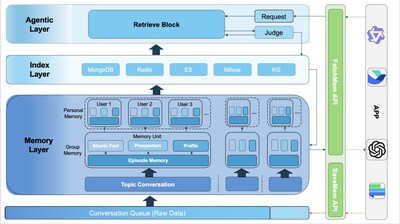From Brick to Click: Small Businesses Embracing E-commerce for Growth
Press Releases
Mar 25, 2024
E-commerce has become essential for businesses since its 1969 inception, with the pandemic highlighting its importance as online sales soared to $82.5 billion by May 2020. Fullmoon Digital stresses that a robust online presence is crucial for tapping into customer bases and data, crucially influencing a company’s profits. While AI and pay-to-play advertising have modernized online marketing, they require careful navigation due to potential missteps in understanding consumer behavior. Precise demographic targeting is fundamental for effective marketing and boosting profits, and businesses that misjudge their audience’s needs risk forfeiting sales and growth opportunities.
WINDERMERE, Fla., March 25, 2024 /PRNewswire-PRWeb/ — Over the last 55 years, E-commerce has morphed into a multi-billion-dollar industry, and it is no stretch to say it has revolutionized the way consumers shop. Today, online sales are commonplace and have become a well-established part of our daily lives. As a business, the risk of not having an e-commerce presence can be the difference between success and failure. “If you are a brick-and-mortar location and are someone that has a good local presence, but you do not have a strong digital presence, your business is not going to survive in this world of e-commerce,” explains Nik Stephney, Associate Director of Strategy and Content at Fullmoon Digital. “Growing your presence on e-commerce has become very pay-to-play and very saturated, and it is easy to get lost in the online market if you don’t have a strong, creative plan for a digital presence.”
The cost of not prioritizing your e-commerce presence
The COVID-19 pandemic not only caused countless businesses to shutter their doors permanently, but also forced more consumers to shop online than ever before. By May 2020, e-commerce purchases increased by 77%, reaching $82.5 billion, (2) and reached an estimated $5.8 trillion in 2023. (3)
Online purchasing has been permanently adopted by consumers and, for small businesses, it is no longer a luxury but rather a necessity. Customers have come to expect the ability to shop from their own homes on their schedule. According to the U.S. Chamber of Commerce, 75% of consumers want to shop at small businesses but do not always have the opportunity to unless those stores have an online presence. (4) Without an e-commerce platform, businesses are leaving money on the table for competitors and losing potential customers who conduct online research before making purchases.
An online presence provides significant advantages beyond just enabling sales. It allows businesses to track customer shopping habits, better understand their audience, and more effectively promote products using high-quality data insights. It also enhances the overall customer experience by letting shoppers browse and buy at their convenience, without the pressure of an in-store visit.
Being open for shopping every day at all hours provides opportunities for increased sales and growth. Businesses that lack an online presence are limiting their ability to reach a broader range of customers, hampering their sales and growth potential.
The problems with pay-to-play e-commerce ads and reliance on algorithms
It seems there is no longer an industry in existence that has not been altered through the influence of artificial intelligence (AI). E-commerce is at the top of the list as algorithms are constantly changing and transforming the way we buy and sell goods online.
Search for a product and, inevitably, the result(s) at the top of the search engine results page will display an ad and the word ‘sponsored’. Businesses and advertisers pay for this content to be placed at the top of the page when certain keywords are used in the search, almost ensuring that unpaid content will be lost in the results, possibly never to find its audience. These are known as “pay-per-click” ads, whereby advertisers are essentially bidding for your click. The search results will change based on which advertisement got the ‘click’, affecting the AI algorithm.
Prior to the explosion of AI, e-commerce sites sorted keyword search results according to items that are the most popular and often the cheapest, which will most likely lead to a purchase. Newer AI models create rankings for each person shopping online based on their behavior, how AI understands the search, and real-time factors such as popularity and demand. (5) All of this creates an optimized shopping experience for the customer.
While algorithms have a multitude of uses in marketing, they also have weaknesses that companies should be cautious of including: (6)
Algorithms are not sensitive to context. To be effective, marketing must be closely attuned to the customer. Constantly changing factors with customers influence how they react, and algorithms are unable to consider all variables.
Customized marketing can be risky. If a customer feels an algorithm knows too much about them and worries their privacy has been violated, the marketing can backfire, and trust can be lost.
They can result in complacency. Having the ability to collect an extensive amount of data on customers can create a false sense that there is nothing else to learn. This can lead to limiting marketing activities to what has previously worked and inaccurate customer profiles.
They may suppress customers’ reactions to marketing. Marketing algorithms encourage customers to make analytical decisions when they often make emotional and impulsive ones. These types of buying decisions help create connections with brands that are lost in an algorithm that can only promote calculated decisions.
These issues can be addressed through a solid marketing strategy that can bring more “humanness” to a brand and how it interacts with customers. Effective marketing is constantly observing the impact of factors and variables on their customer base.
How targeting the right audience increases profit
Who is your target audience? What is your target market?
If a business cannot answer these questions, it is likely to miss out on sales. Knowing the answer to these questions can lead to an effective marketing strategy, better customer connections, improved customer satisfaction, and increased profit.
Trying to be everything to everyone is not an effective marketing strategy. Identifying a target market—a segment of consumers a company plans to service with its products or services—is an essential step in creating marketing efforts to promote the products or services.
Target markets are typically determined using 6 key demographic elements: (7)
- Age: using age to target consumers can provide valuable information about habits, tastes, and other requirements allowing for a specific approach tailored to their wants and needs.
- Gender: using gender in marketing strategies creates opportunities to connect with distinct genders and push back against stereotypical roles.
- Income: income levels will affect consumers’ resources and spending habits and effective marketing will tailor products and services to customers’ income levels.
- Education: education levels play a role in a customer’s purchasing decisions, affecting which products and services they like and where they turn for answers and solutions.
- Occupation: knowledge of customers’ jobs creates opportunities for specialized goods and services for specific industries.
- Geographic Location: where consumers live will greatly affect interest in and demand for products.
Having this demographic information provides companies valuable insight into their target audience’s tastes, interests, and habits, allowing them to better reach their target customers and keep their attention. Accurate demographics create opportunities for personalized marketing messages, more efficient advertising, and tailored products and services. When businesses target effectively, they are maximizing their marketing budgets and seeing a noticeable return on that investment.
“If brands are not accurately representing their audiences, then they are absolutely leaving money on the table,” Stephney shares. “If a brand has limited creativity in the way it presents itself online, it may not be appealing to all of the right demographics and losing sales in the process.”
About Fullmoon Digital
Fullmoon Digital (FMDM), founded by Derek Chew, a former early Yahoo! employee, is one of the few 100% independent digital marketing agencies in the United States. The firm is cross-functional, with deep experience in media planning and buying, digital consultancy, SEO, digital strategy, programmatic, analytics, performance marketing, paid media, social advertising, and creative. They push the envelope of what is possible in terms of marketing and technology, all the while providing best-in-class digital marketing service to their “pack” of clients. For more information, please visit http://www.fullmoondigital.com.
References
- Lab, The Fulfillment. “A Brief History of Ecommerce (and a Look at the Future).” Fulfillment Solutions, http://www.thefulfillmentlab.com/blog/history-of-ecommerce. Accessed 13 Mar. 2024.
- Koetsier, John. “Covid-19 Accelerated e-Commerce Growth ‘4 to 6 Years.'” Forbes, Forbes Magazine, 30 June 2021, http://www.forbes.com/sites/johnkoetsier/2020/06/12/covid-19-accelerated-e-commerce-growth-4-to-6-years/.
- Basta, Will. “Council Post: From Pandemic Surge to Future Trends in e-Commerce and Digital Products.” Forbes, Forbes Magazine, 8 Mar. 2024, http://www.forbes.com/sites/forbesbusinesscouncil/2024/03/07/from-pandemic-surge-future-trends-in-e-commerce-and-digital-products/.
- Thau, Barbara. “Pandemic Consumer Trends: Hyper-Local Commerce & Small Brands.” CO, 1 June 2021, http://www.uschamber.com/co/good-company/launch-pad/post-pandemic-consumers-demand-smaller-brands.
- Lemoine, Julien. “How Ai Will Impact Ecommerce: A Before & After.” Algolia, 2023, http://www.algolia.com/blog/ai/ai-eats-ecommerce/.
- Dholakia, Utpal. “The Perils of Algorithm-Based Marketing.” Harvard Business Review, 17 June 2015, hbr.org/2015/06/the-perils-of-algorithm-based-marketing.
- Lin, Karen. “Demographics: Path Social.” Path Social | Real Instagram Followers | Organic Instagram Growth, 15 Feb. 2024, http://www.pathsocial.com/resources/demographics-analysis-how-to-target-the-right-audience/#:~:text=Focusing%20on%20the%20most%20lucrative%20consumer%20segments%20allows,results%20in%20a%20higher%20return%20on%20investment%20%28ROI%29.
Media Inquiries:
Karla Jo Helms
JoTo PRTM
727-777-4621
jotopr.com
Media Contact
Karla Jo Helms, JOTO PR™, 727-777-4629, [email protected], http://jotopr.com/
![]() View original content to download multimedia:https://www.prweb.com/releases/from-brick-to-click-small-businesses-embracing-e-commerce-for-growth-302097406.html
View original content to download multimedia:https://www.prweb.com/releases/from-brick-to-click-small-businesses-embracing-e-commerce-for-growth-302097406.html
SOURCE Fullmoon Digital



